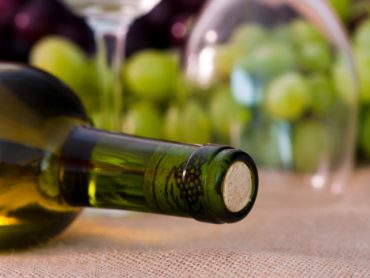In Vino Veritas LXXVIII: By the Glass Strategy
One of the luxuries of self-isolation is that it has afforded me the chance to drink down my cellar, as well as take the time to converse with a few friends who happen to be wine merchants with a few extra bottles on hand to put together some taster packs for me. And upon sampling these individual bottles, it made me think about how wine purchasing behaviors will change after the pandemic.
While discussing what would compel the average person to start buying by the case versus only by the individual bottle is a topic unto itself, my fear is that in a period of sharp economic decline and uncertainty, many hotel restaurants will struggle to convert by the glass (BTG) patrons into purchasing a full bottle.
With this in mind, it would be prudent for all dining outlets to have a solid BTG strategy so that revenues and customer satisfaction are never compromised. Thinking not only as an adaptation to the near-term effects of coronavirus, but also that people in general are drinking less alcohol, so you need sound tactics to get them from one glass to two, and from two to more.
It goes without saying that all guests should drink responsibly and not get behind the wheel after they are approaching or over the legal alcohol consumption limit. At the same time, though, most restaurant operations require alcoholic beverage revenues to keep the business afloat, so getting people to drink more is not a topic to shy away from. In fact, this is one of the more fun aspects of being a hotel asset manager in that it has let me work alongside several brilliant sommeliers and restaurant managers to come back with a BTG program that delights patrons and delivers on the income statement.
Through our experience in helping launch new dining concepts within hotels and resuscitate others that were hemorrhaging cash, the best BTG programs can be defined as:
- Short. Keep the options for red and white highly limited. The more you put on here, the harder it will be to manage inventory and the longer patrons will take in making their orders. You want the decision to be a no-brainer while at the same time not putting too much burden on the server to remember the key selling details for each bottle.
- Simple. While brevity can allude to simplicity, there are other aspects that contribute to the latter including legibility in font as well as estate name and region identification. Namely, people are less likely to order when they are confused, or at the very least they will take up more of the server’s time to possibly impede service at other tables.
- Diverse. Even though it motivates sales when names of bottles are readily understood, this does not mean you should resort to only those wine brands that are internationally known. Be bold and offer a reasonable BTG variety, and your wine list will become renowned in its own right.
- Anchored. Some people will only ever buy the cheapest item on the menu and that’s not a habit you can change. However, you can deploy the principles of anchor pricing to your BTG program by juxtaposing a more lavish offering against a less-expensive option to make the latter look like a better deal to a tightwad.
- Extra. It’s not uncommon for hotels to use the BTG menu to help get rid of remnant stock. While this is a wholly salubrious tactic to take, the one caution is to ensure you have a solid updating process in place. That is, it looks highly unprofessional for your website’s wine listings to be out of sync with the paper menu or, worse, for the paper menu to be wrong. If you are cycling through unwanted inventory on a weekly or biweekly basis, make the BTG page an insert that can be updated at any time by the restaurant manager or sommelier, and leave your BTG selections off your website.




